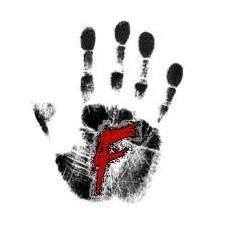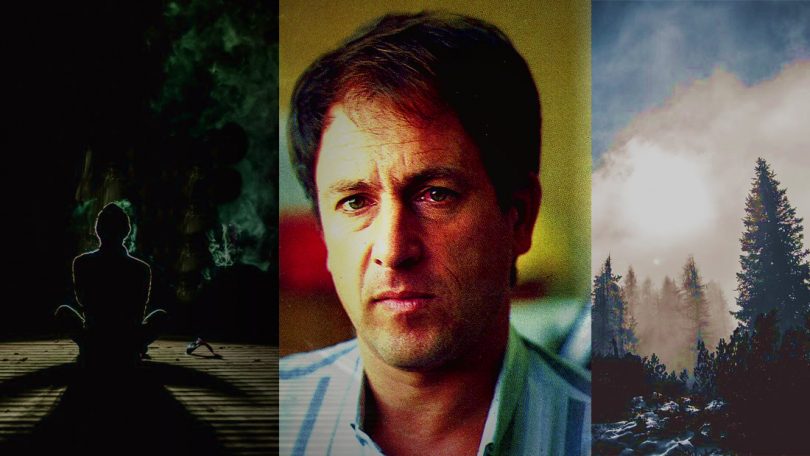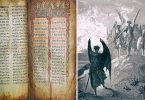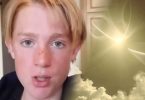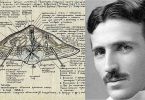Last year marked the 25th anniversary of the passing of Andreas Faber-Kaiser . For current generations raised in the heat of the Internet, his name may not find much echo, although his books, and some circulating biographical profiles, serve as testimony to that legacy.
Although we cannot speak of neglect in terms of memory, the absence of a specific work narrating his life makes it somewhat difficult to order aspects of his passionate work. But as the impossible do not exist, aware of our obstacles, here is our attempt to condense key moments, of a man personally admired, and of great inspiration especially for those who write. This is my tribute.
Andreas Faber- Kaiser The Son of the Stars
One year before the end of the conflict of World War II , April 5, 1944, Andreas Faber Kaiser was born in Barcelona, Spain . His parents Emma and Will Kaiser were German immigrants who in the 30s decided to leave Germany after the rise of Nazism.
Will Kaiser artista autodidacta, alcanzaría grandes logros como ilustrador, pintor y diseñador gráfico, convirtiéndose en una pequeña celebridad en el mundo del arte. Sus contactos posibilitaron al joven Andreas, conocer algunos de sus primeros referentes del misterio, como es el caso de Antonio Ribera.
By those days Andreas already stood out as a born astronomer, although he never did formal studies. However, in 1972 when he turned 28, he managed to obtain his first award, when he was awarded the National Astronautical Prize , ” Julio Marial “, for his study Repercussion of Astronautics on the life of man . Parallel to these skills, Andreas had already graduated in Philosophy and Letters . These aspirations, however, were later transferred to the world of enigmas, where the incipient ufological movement would catch the attention of the restless university student.
To his friend Juan José Benítez, who would do a reserved interview, he would reveal some details of his choice, narrating his interest in the “unidentified”, which had skyrocketed in the sixties.
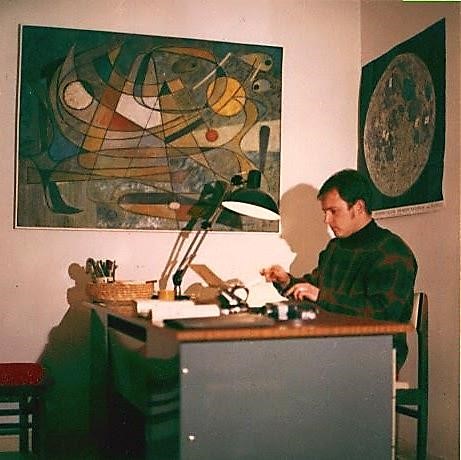
Would say:
I liked to observe the sky at night, and I mused that in that immense space there must be other beings apart from us. The eagerness to contact them increased with the reading of news in the newspapers of that time, which reported sightings of flying objects not made by man. Finally, reading the book The Great Enigma of Flying Saucers, by Antonio Ribera, published in 1966, decided me definitively to investigate what was behind all that phenomenon. “
Soon this adhesion would be reflected in the publication of Unknown World , where Faber Kaiser would unleash all his inventiveness through his perhaps most ambitious project, unleashing a true revolution in the environment of mystery.
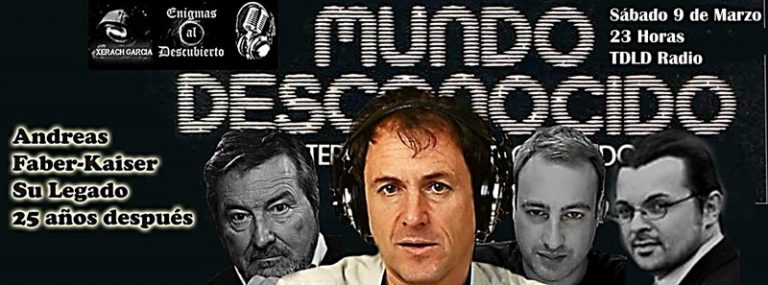
Unknown world. Another Planet Magazine
“To avoid being carried away by the current, there is only one resource left. Fortunately within the reach of each and every one of us: think. One can be limited by the environment in which he is forced to move, but what he can never allow is that others decide for him ”.Andreas Faber Kaiser.
Perhaps inspired by the prestigious French Planète , founded by the mythical Jacques Bergier , author of the inspiring The Return of the Sorcerers among other works, Unknown World knew how to coin that same vision in its bosom, a condition that would make it an instant classic.
Its first issue appeared in June 1976, and it immediately managed to capture the media attention, then fascinated by this unusual bet. Unknown World meant a high milestone in the career of Andreas Faber Kaiser , who as director and editor knew how to shine like nobody else.
At his side as a secondary and no less important figure in the project, appears the name of an Argentine, Alejandro Vignati, 1934-1983, writer, journalist, poet, and above all a formidable researcher, who for many years knew how to accompany the Barcelona teacher on his adventures, being also one of his few close friends, later tragically dying. I promise to take care of your case one day. But let’s continue with Unknown World.
Through its pages some of the most outstanding personalities of the mystery passed, mentioning authors such as «Jerome Clark, Michel Coquet, Erich von Däniken, William Dick, Raymond Drake, Jimmy Guieu, J. Allen Hynek, Friedrich Jürgenson, Dileep Kumar Kanjilal, Peter Kolosimo, Peter Krassa, Aimé Michel, Louis Pawels, Roberto Pinotti, Scott Rogo, Zecharia Sitchin, Andrew Tomas, Iván Trilha, Jacques Vallée, Colin Wilson, Juan G. Atienza, V.-J. Ballester Olmos, JJ Benítez, J. Salvador Freixedo, Fernando Jiménez del Oso, Manuel Osuna, Domingo Pastor Petit, Antonio Ribera, JM Rodríguez Delgado and Enrique de Vicente », a synthesis of an endless list that today would be impossible to gather.
The fame of Mundo Desconocido reached its most important bar, when in 1980 it obtained the Scinter prize , an award for one of the three best informative works of its kind. Quite a milestone. Unknown World continued active until 1982, ending its work after six grueling years. Andreas Faber Kaiser had proven himself, and nothing seemed to stop his spirit of irreverence. A greater surprise awaited.
Jesus Lived and Died in Kashmir – Biblical Heresy
Before addressing this work, it is necessary to mention Andreas Faber Kaiser had already unleashed his talent as a mystery writer, his first work being Priests or cosmonauts? , which gave birth in 1971, where the Spanish author began to ask questions about the actions of unknown aerial visitors , looking for clues in the earth’s past.
The ufological question puzzled Faber-Kaiser , who was beginning to see a regular pattern when observing these enigmatic forays. Again we turn to Juan José Benítez , who in 1985 managed to start Faber-Kaiser, algunas pinceladas sobre el tema.
UFOs as such, simply what their initials indicate: unidentified flying objects. These include a long list of flying objects that – due to their characteristics and the historical moment in which they appear – do not respond to the technological level of the corresponding generation of the known human race. Its origin must therefore be sought in another intelligence other than that of this human race ”.
This interesting contribution would be followed by The Great Enigmas of Heaven and Earth , 1973, which would be the only joint collaboration between Andreas Faber-Kaiser and Alejandro Vignati , where both authors dive into inexplicable facts. But in 1976 Andreas Faber-Kaiser would break out with his most controversial work, Jesus Lived and Died in Kashmir , which would launch him to literary stardom.
Last December we published an article on Jesus , where we gave birth to information about his lost years, those ranging from 13 years to 30. We mentioned Nicholas Notovich a Russian scholar who wrote Jesus secretly resided for 17 years in India and Tibet , being known in those latitudes as the saint Issa.
In a way this was the thesis followed by Faber-Kaiser , and that Erich von Däniken had popularized in 1975 through one of his books, Journey to Kiribati. The Mysterious Lost Islands of Extraterrestrials , although treating the subject in a very limited way.
But Faber-Kaiser bet on more and his dedicated work, Jesus Lived and Died in Kashmir , became a publishing success that in 1976 crossed borders, and fascinated thousands of readers.

Of course, that recklessness brought resentments especially from the Catholic Church, which accused him of defaming the figure of the son of God, with insinuations about a Faber-Kaiser with Muslim sympathies, who sought to undermine that sacred belief. It was a revealing investigation, which meant a before and after for Andreas.
Andreas Faber – Kaiser, and the declassification of UFO files
“I decided to investigate the phenomenon because from the moment it seemed to exist and be the manifestation of a superior intelligence different from ours, it was worth finding out everything that can be ascertained about it and knowing to its extreme ends the relationship that could exist between this other intelligence and us ” . Andreas Faber Kaiser, 1985, answering a UFO questionnaire made by his friend Juan José Benítez
. After the impact caused by Jesus Lived and Died in Kashmir, 1976, the next works by Andreas Faber-Kaiser focused on the ufological enigma, being one of the first researchers to proceed to disseminate material declassified by the American intelligence services.
Between 1980 and 1981 were published, UFOs; the CIA Archive. Documents and Memorandums , and UFOs: The CIA Archive – Sighting Reports . Faber-Kaiser nurtured a great distrust in the UFO phenomenon, confusion that was increasing, in the face of reported cases of an increasingly bizarre nature. Something was wrong.
In another paragraph of the questionnaire we read:
The human being on planet Earth is a product manufactured by intelligent beings who populated the universe or part of it long before our existence. These beings have not put on the planet we populate today and they continue to closely monitor our evolution. They have never ceased to subtly guide the course of our history ”.
After these deliveries Andreas Faber-Kaiser will continue the UFO path, with 1984 being his last outstanding year in the genre, which he will gradually abandon for other interests then to be reviewed.
At this stage its first volume will be Las Nubes del Engaño. Ancient Extrahuman Chronicle , synthesizing the following:
I want to point out that in this work I do not try to interpret or provide solutions. I only list some events in it in a chronologically ordered succession (as far as possible), so that these events do not fall into oblivion and instead serve as an instrument for every sincere seeker. It is an updated and selected review in terms of its documentary rigor of the incidence of the extraterrestrial phenomenon in our own existence ”.
A second volume continuing this same approach would embody Out of Control. Modern Extrahuman Chronicle , also from 84 ′. As Andreas himself tells us :
Out of Control presents the evidence we have of the presence, especially in our atmosphere, of flying objects whose origin, purposes and characteristics we do not know, but which are identified with those others that in times past were interpreted as divine signs in the sky and their crew received as divine beings by terrestrial man. Out of Control, due to the imperatives of the phenomenon’s dynamics and its implications, it is not limited to the exposition of a phenomenology or casuistry of sightings, but also contributes attitudes of certain sectors of the scientific community and of the leading community towards the phenomenon. exposed”.
Even with strength, that unforgettable 1984, Orwellian year, was given the luxury of publishing the surprising La Cavern de los Tesoros , a beautiful treatise collecting ancient esoteric traditions loaded with enormous symbolism. And where Andreas Faber Kaiser delivers himself like a fish in water, charting a next route that would encourage him to conduct two exceptional explorations.
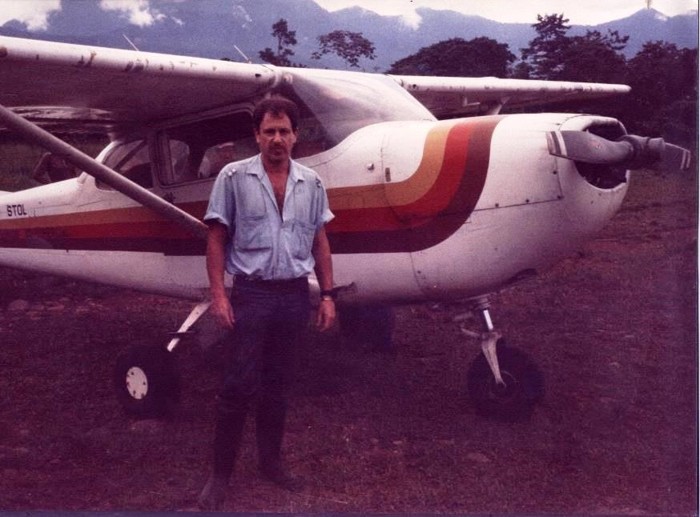
But the rhythm of the unstoppable keyboard would be followed, without leaving this year hinge for Andreas Faber-Kaiser , of an incredible trip to remote Micronesia , with unsuspected derivations in his career as a researcher. Adjust the belts.
Nan Madol – Lost Blade of Lemuria
“Looking through the clear water, I had the impression that the constructions seemed to« grow », on the island, their architectural forms being like the prolongation of something deeper, something that leads us to the legendary concept of« the sacred source ». It is not possible that instead of a fountain, it was an access to an underground facility of such magnitude? Erich von Däniken. The Message of the Gods, 1973.
Recently in a previous article we referenced some secrets of the Island of Micronesia, and we cited Andreas Faber-Kaiser’s book , On the Secret. The magical island of Pohnpei and the secret of Nan Mato l, which although conceived in 1985, saw the light a year later.
The monumental journey that would bequeath one of the most personal visions of the memorable Faber-Kaiser , and a favorite of the writer, had as its main engine, once again, his friend Erich von Däniken , who included his concern, as part of an agenda within the explosive, El Oro de los Dioses , 1972, where the Swiss writer threw his bomb on Tayos into the world , as well as in The Message of the Gods , 1973, a kind of continuation. But the enigmas of Oceania with Nad Matol (also Madol) as the main theme, only deserved some colorful notes, without dedicating more time to it. Däniken was unfazed.
As Faber-Kaiser recalls in his book, the expedition that would take him to Nad Madol began to take shape in 1981, at a meeting where Däniken participated , along with other fellow friends. His enthusiasm, as we already said, did not awaken Däniken’s desire to accompany him. He only said: “but think that you are going to the last corner of the world.” He was half wrong with the sentence, we will see why later.
This investigation, perhaps the most watery after his contributions to the Kashmir-Jesus affair, finds a more adult Faber-Kaiser in his gaze, foreshadowing his evolution, as a graduate researcher in high mysteries . And it is that Andreas is going to face a challenge rarely seen, about ancient enigmas very well protected, under the halo of a power that will later cross him again in his next expedition to the east of Ecuador.
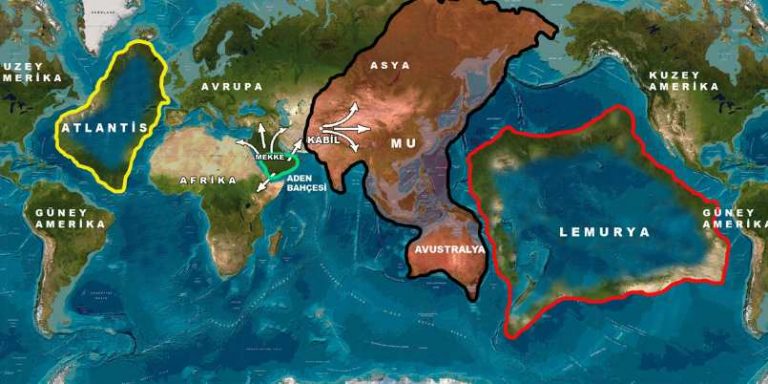
But continuing with Nad Madol , here our Barcelona teacher, will witness strange rituals and extreme secrecy about a past yet to be rebuilt. Faber-Kaiser’s first approach to a ceremonial initiation center , bordering on the forbidden. This experience will mark you forever. One of the most significant findings made by Fabber-Kaiser , released in On the Secret. The magical island of Pohnpei and the secret of Nan Mato l, is the importance of the underground world in the complex framework of the enigmatic construction.
Thus in one of his most intriguing pages included in his work, Nine and the Octopus , Andreas will express the following:
The number nine is the one that corresponds to everything that happens in the underworld, and to underground events. Nine stands as the delicate cabalistic joker – we saw it as a symbol of birth – of life and death: at birth we die and we are born at death. It is the permanent rebirth of the ashes themselves. This duality is present in the essence of Pohnpei: being the sacred rock of the new earth, there is an intense smell of death throughout its history – and even today. Hence, the religious sensibilities of the inhabitants of this sanctuary of the supposedly disappeared continent – Ma, Mu, Lemuria- revolves around the presence and effective action of the spirits of the deceased: spirits, ghosts and ghosts of the ancestors preside over the lives of the current inhabitants of Pohnpei (enclave of Lemuria?). Lemuria is dedicated in Rome to the spirits of the deceased: spirits, ghosts and ghosts of the ancestors. Both environments are presided over by key nine ”.
Nad Madol a sanctuary linked to the old ancient Lemuria-Mu ? Such is the synthesis that Andreas Faber Kaiser seems to arrive , where giants, unknown technology, underground tunnels , and other strangeness, are part of one of the most fascinating enclaves on the planet and once inhabited by the so-called kings of the sun.
Tayos – The Devil’s Cross
“You are the first foreigner who has had the courage to go to the caves alone. Others have tried, but no one has ever gone alone. My respect for you has grown enormously, so next time you come, I promise to accompany you to the jungle. I only ask you in exchange not to publish absolutely anything of what you have seen or what I have been explaining to you ” . Excerpt from a talk between János Móricz and Andreas Faber -Kaiser, later transcribed in their article, La Cruz del Diablo. On the threshold of the Cueva de los Tayu. Visit the last guardians of the underworld alone. Beyond Magazine, 1986.
Shortly after returning from his historic trip to Oceania, Andreas Faber Kaiser will embark on another adventure, this time heading to the Ecuadorian East . We are talking about the year 1986.
At that time the complaint by János Móricz about unknown tunnels and their strange legacy, which he reported found in the Cueva de los Tayos , Morona-Santiago canton, has the Spanish media sighing, especially thanks to Erich von Däniken who in 1972 commented on it widely in El Oro de los Dioses .
For Andreas , who was gradually abandoning his UFO vision disenchanted by the few advances, that Móricz report has the effect of an irresistible appeal. Andreas boldly decides to delve into that mystery, which, as he discovered while passing through Nad Madol, seems to hide a forbidden secret .
Little is known about what happened on this trip, since Andreas barely bequeathed some visions that were later revealed in his famous article La Cruz del Diablo. On the threshold of the Cueva de los Tayu. Solo visit to the last guardians of the underworld , 1992, published two years before their death. There we witness his disagreements with Móricz , who, although he received him with great compliments, later seemed annoyed by his surprise interference. Móricz made it possible to discourage him or rather to mislead Faber-Kaiser , with whom he did not seem to tune in his confidence.
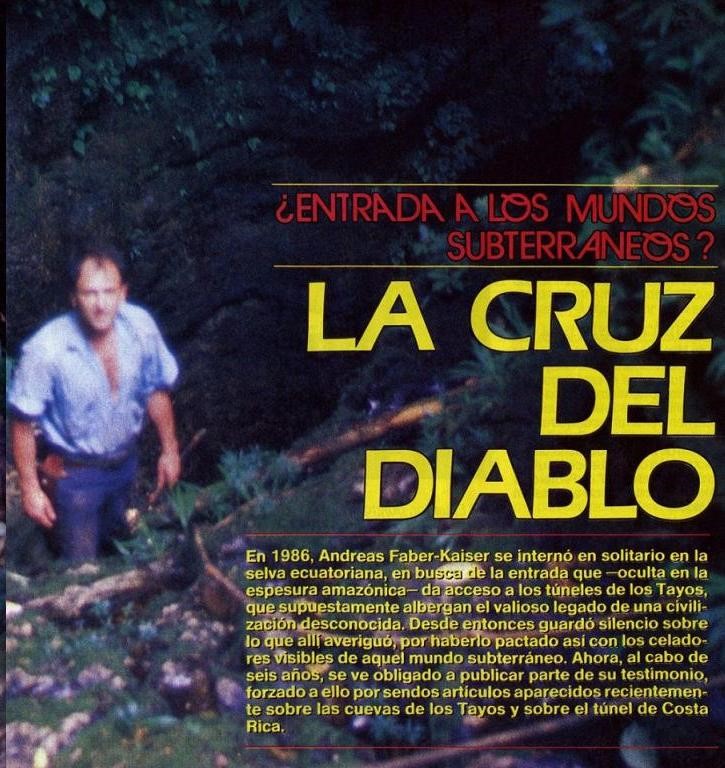
In another part of his report on Tayos, Andreas even reproaches his friend Erich von Däniken , whom he accuses of lying about the case, a curious attitude if we think Däniken had encouraged almost all his expeditions. His anger also included other Spanish colleagues such as Juan José Benítez , and even without mentioning Salvador Freixedo , with whom Móricz did connect.
And is that Andreas unintentionally, was prey to a subject that was going to be fatal for all those touched by the enigma, where sooner or later, the most varied reactions were detonated in the search engine, defined as the Tayos curse . Even so with these setbacks, Faber-Kaiser , who despite not descending into the domains of the most famous cave on the planet, nevertheless manages to address some of its secrets.
Thus, in his enigmatic ending recounting the vicissitudes of his Ecuadorian adventure, Andreas writes in his article:
Few people at this time know the correct keys to reach the gold library. This report shows you the lock. But if you don’t have the key, you will never get to open the door. If you try to force it, you will burst in the attempt. Read, listen, document yourself in other sources, in other texts, in other books. Exist. The key exists, fortunately for the true seekers. You just have to be honest with yourself, be honest, and know how to read each sentence in various ways. It is solely on the skill and purity of the seeker’s purpose that he finds the key to this legacy. Always remember that only the one who really deserves to arrive arrives ”.
Last years of the Man Who Knew
“A cosmic supercivilization resorted to genetic engineering to give rise to the human being: us. But, is it possible to conceive the human organism – here we will not enter into the discussion of the spiritual, psychic or energetic part of our personalities, which this organism occupies during the period of time of each one of our individualized lives – as a fabrication, understanding this fabrication in the broadest sense of the word, and not as an authentic ‘creation’, but as a manipulation of the available elements? ” . Andreas Faber-Kaiser. The Human Doll, 1989.
After his experience in Ecuador , Andreas Faber-Kaiser will face one of his most difficult moments, which has 1988 as the decisive year. The Rapeseed Oil scandal that put the health of hundreds of Spaniards at risk, contaminated by its effects, was the axis of the Pact of Silence , where Andreas is going to make his most devastating and dramatic complaint. Hidden Code recently reviewed the issue , and I will not return to it, keeping in the future a personal opinion about everything that happened, and that it would seriously affect Andreas’ life due to its derivations.
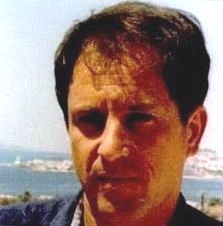
Parallel to these painful events, Andrea Faber Kaiser turns to the radio through already legendary programs such as, ¿Qué Volen Aquesta Gent? Spreading the extraterrestrial theme within Catalonia, other of its cycles being the famous Alpha Tuning of a more esoteric cut, and specials through L’Arxiu Secret.
A year later, in 1989, his last book appeared, The Human Doll , perhaps his most disturbing testament. Here he returns to the attention on a directed and manipulable creation of the present humanity, by unknown entities that seem to interact in the shadows.
A thoughtful Andreas writes:
Some advancement scientists and the oldest legacies in our history converge on a logical explanation for the origin of humanity: a cosmic civilization unknown to us fabricated us in the remote past. Later someone — either the same original programmer or a different one — made a mutation in the programmed being, to guide our genetic development towards our current human condition. But what did our programmers do after we fabricated and possibly mutated into a later state? Did they abandon us to our fate? Or, rather, have they been controlling the development of our existence? There are enough examples that show that in the past and also today someone else – and at least technologically, more advanced – stayed and remains close to us, accompanying us throughout our history. But they have not only dedicated themselves to controlling us, but in certain decisive historical moments for the march of humanity, they have intervened directly to channel it in one direction or another ”.
During this period he was elected international coordinator and editorial advisor of the magazine Más Allá de la Ciencia , a position he held until 1992. His later years will focus his thinking on the future of man, advocating for his mental liberation, and careful observation, in the face of strangeness of facts often incompressible without the possession of correct keys.
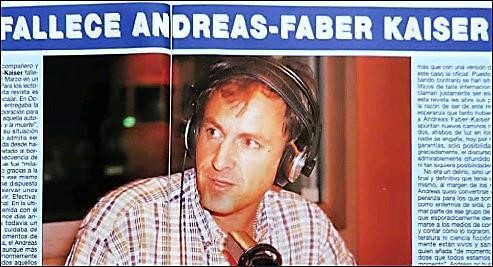
On March 14, 1994, Andreas Faber-Kaiser with only 49 years of age will see his light turned off, traversed by a cruel disease. In 2002 his friend Juan José Benítez will dedicate in Mágica Fe , a moving and more than revealing chapter, narrating some synchronic events after his death, I invite the reader to delve into his reading. And is that Andreas Faber-Kaiser in case you did not know, is an eternal box of surprises. Up to this point.
Conclusion
Andreas Faber Kaiser is a rare sight of the mystery, he still continues to dazzle by his dedication, and perseverance, and whose legacy currently has his son Sergi Faber as its greatest exponent, just listen to the Youtube channel Sintonía Secreta , and you will know what I mean. I advocate as I said at the beginning of this article, for the realization of a prompt biography on the life of this exceptional researcher. Hopefully someone picks up the glove! So be it!
